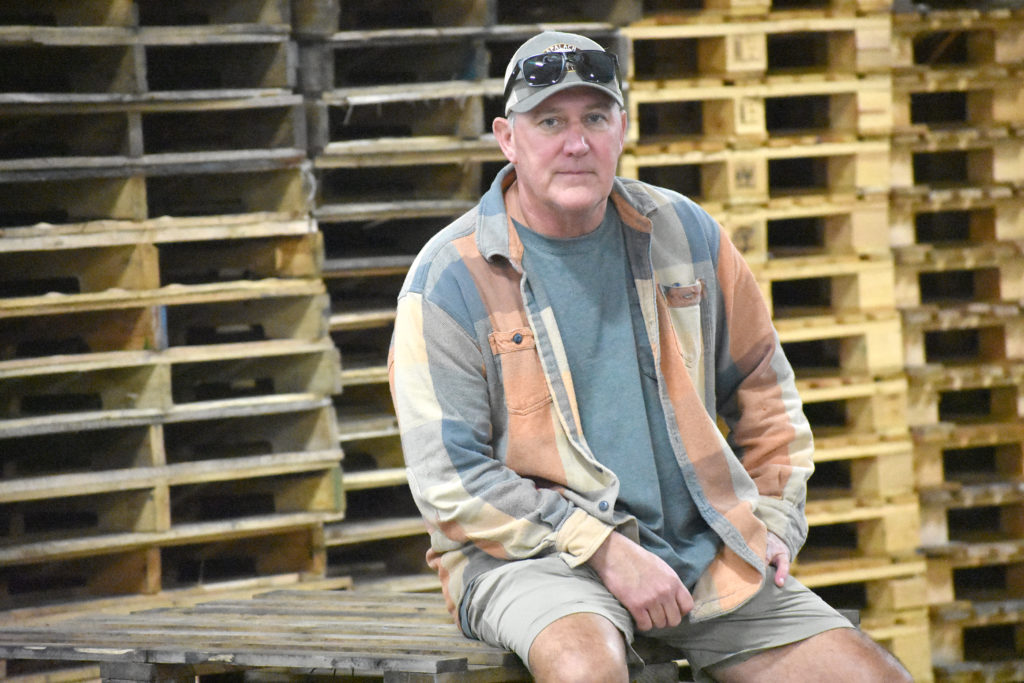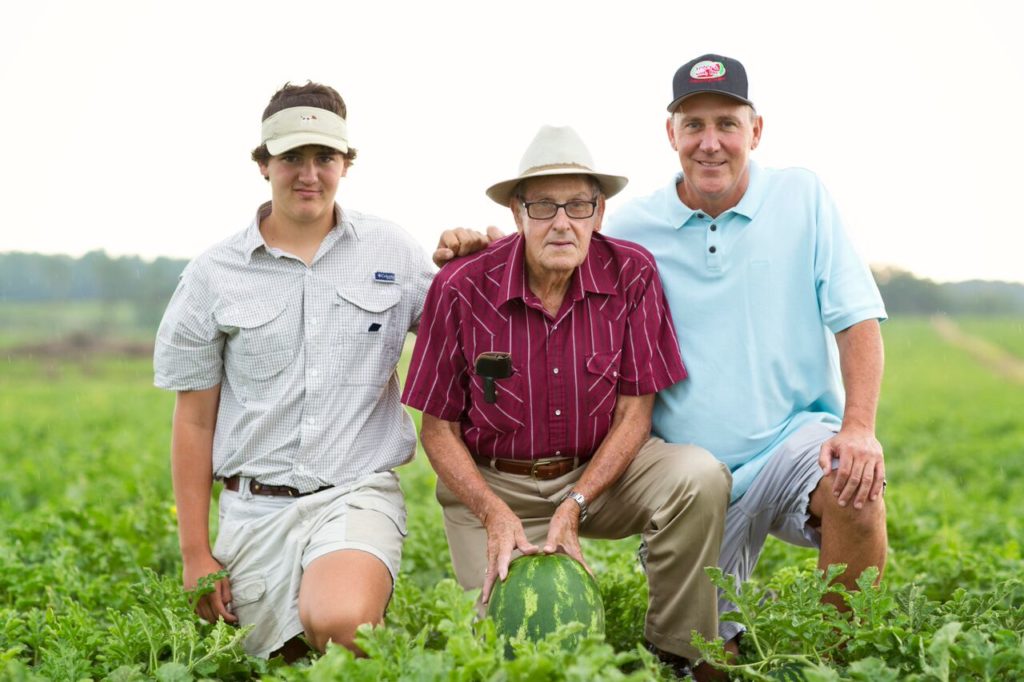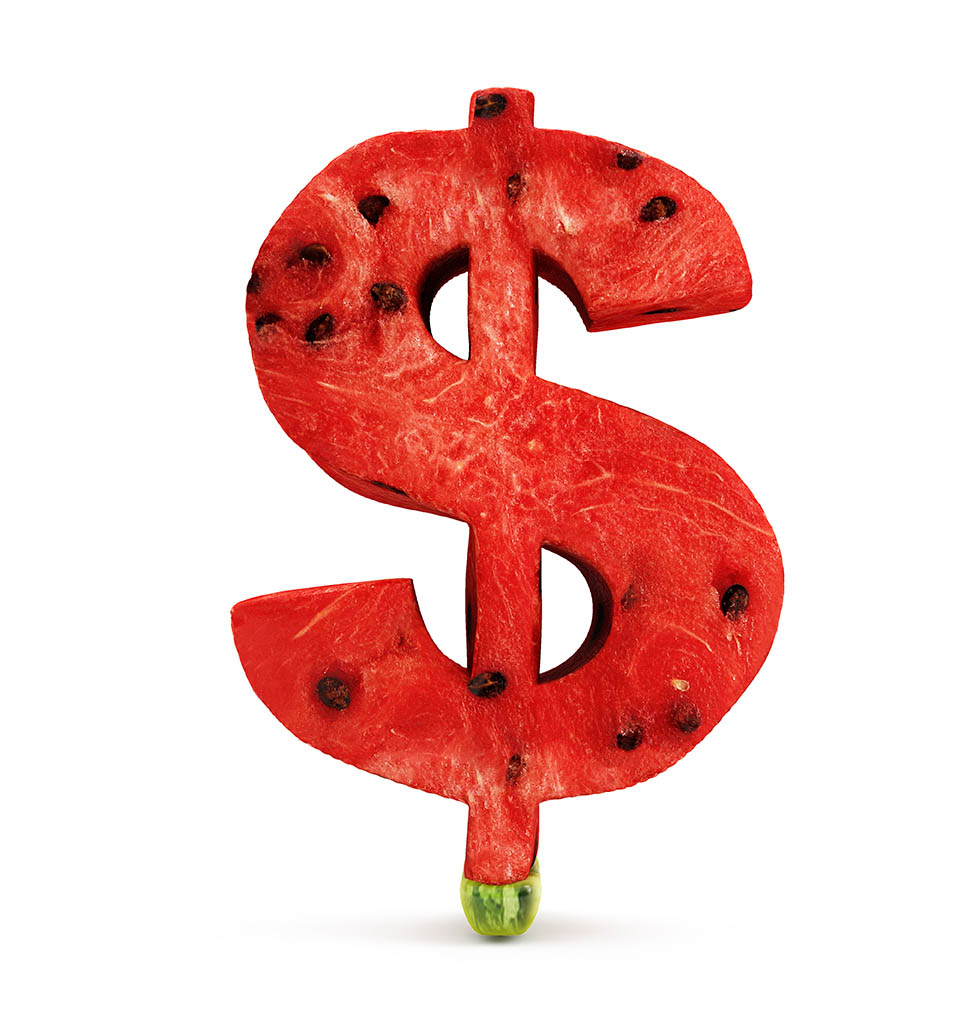By Clint Thompson
The current agricultural landscape has one South Georgia watermelon producer in survival mode. Instead of looking ahead five to 10 years down the road, Crisp County’s Greg Leger is taking it one season at a time.

“How long can we sustain what’s happening right now? They’re not challenges that we haven’t faced in agriculture before. But we really need to take a close look at what we’re doing here and how can we fix some of these issues for the future of the farmer,” says Leger, owner of Leger & Son, Inc.
Watermelon producers are not immune from the current inflationary period gripping the country. Like other farmers, Leger has had to overcome rising costs associated with fuel, fertilizer and pesticides. But unlike some growers, Leger believes this current farming climate could serve as a reset button for the industry.
“We’re all putting this money out there, and you’re only one hailstorm away from losing it all,” says Leger. “This inflation may be the reset button we’ve been looking for. In the past, we’ve had overproduction in this industry. That always drives the price down.
“We’re just trying to make it one more season. We all realize we can’t keep doing this. It just doesn’t make any sense if it stays like it is now. Hopefully, this is the reset button we’ve been looking for to bring other production problems in check. Maybe we can learn to do more with less and be more efficient.”

Photo by Sunny Lee Photography
GROWER-SHIPPER OPERATION
Leger owns one of the largest grower-shipper operations in the Southeast. His father started the business in 1965. As soon as Leger was strong enough to throw a watermelon, that soon became his summer job. The summer job soon became his career. He bought the business in 2001 and has helped the organization grow from a small shipper to one that’s responsible for more than 2,000 loads per season from April to Labor Day.
Leger & Son coordinates with multiple growers in Florida, Georgia and Indiana. The company provides the financial backing, while the producers work the farm. It’s a process that has been successful for decades.
“We are a grower-shipper in the sense that we have a vested interest in the land, rent, the seed and the growing cost. We front the seed and growing cost and advance money for harvesting. When we settle with those growers, that comes off the settlement,” explained Leger. “We basically work seven days a week throughout the summer. You always have trucks delivering, no matter if it’s a Sunday or a Monday.”
Leger has three seasons with peaks at Memorial Day in South Florida, Fourth of July in Georgia and Labor Day in Indiana. The key to Leger maximizing success during those peak seasons is developing trust with his buyers who know they are purchasing a quality product.
“We try to a keep good product on the shelf, keep our name on it. We manage the food safety part of it and just try to outperform some of the larger guys. That seems to keep the customers coming back year after year,” Leger says. “It’s a team effort.”

ESCALATING COSTS
But success doesn’t come without challenges. Leger has had to overcome high input costs in recent years that have threatened the sustainability of watermelon producers.
“It’s challenging to say the least. There are some producers that are dropping out because of the risks. It seems the input costs have gone up by at least a third with petroleum products like plastic. Labor costs are up as well,” Leger says. “Diesel fuel is up. Seed costs are up. Pallets and bins are all up. You used to spend $2,500 an acre. Now you’re looking at $3,500 or more.
“You’re risking a whole lot more money, and the return stays the same. I think one of the challenges is most of the producers now are going to have to do more with less; 40,000 pounds to the acre used to be the number. Anybody that makes 40,000 pounds these days, you’re really not making any money. You’ve got to get up to the 50,000- and 60,000-pound range.”
Land rent is another key input cost. Producers are challenged with finding adequate land to produce a crop. According to Leger, watermelons require five to six years between plantings because of nutrients and disease pressure, specifically fusarium wilt.
“The challenge of fresh dirt, as we call it, for watermelon has increased the rent for watermelon land because of the demand. It used to be $150 per acre. Now it’s $250 or more,” Leger added.
Domestic growers are also competing with imports from other countries. Like blueberries, strawberries and numerous vegetable commodities, watermelons are a highly valued crop imported from countries like Mexico.
“If your food is produced in another country, then that’s a national security issue in my opinion. The automotive industry saw that with the computer chips made in China. What if that happens with our food? I think urban America needs to wake up and realize that policy matters and that we need to hold onto agriculture in the United States of America,” Leger says.
He notes that Mexico dumps low-price products in the United States due to lack of regulations and lower labor and input costs. “They can come in and beat us on pricing,” says Leger. “Some of the pricing they throw out there that these chain stores embrace is below our production costs.”
LESS WATERMELON PRODUCTION PREDICTED
The cost of doing business is suddenly not adding up. Leger believes the impact will be noticeable in how much of the watermelon crop is produced.
“I think you’re going to see less acres this year. I think this year will be the first year in quite some time that watermelon acreage is going to go on a downfall in the Southeast,” Leger says. “From what I’m hearing, Florida is going to be off some, too. People are just throwing their hands up. We know as farmers that sometimes you can’t make it work on paper, but now more than ever, it seems the math just doesn’t work anymore. Having said that, maybe we’re going to get more money for this stuff. What we really need is for input costs to go down, so we don’t have to try to sell a $12 watermelon.”









